Art of Walt Disney (the)
| série: | Disney |
| dessinateur / scénariste: | Finch Christopher |
| éditeur: | NAL edition EO 1975 |
| genre: | Etude |
| classement: | biblio1 |
| date: | 1975 |
| format: | broché |
| état: | TBE |
| valeur: | 15 € |
| critère: | *** |
| remarques: | English book, the art of Walt Disney from Mickey Mouse to the Magic Kingdom, 150 pages Walt Disney was a man who believed in his own instincts and abilities, he was also a perfectionist, he brought a special art form in the Disney studio, starting with short cartoons, then finalizing with feature films of animated movies 1/ a new art form a) early entreprises - Walter Elias Disney was born 1901, he had some art education from a cartoonist: Leroy Gossett, in 1919, Disney met Ubbe Iwerks who soon was to become his most important associate, both joined later the Kansas City Film, there they created the Newman Laugh-o-Grams, - Disney then founded his own company and created some fairy tales as commercial and illustrated comic cartoons, 6 of them were: - Cinderella - the four musicians of Bremen - - Goldie Locks and the three bears - Jack and the Beanstalk - - Little Red Riding Hood and Puss in Boots, they were the first short cartoons - Disney built up a new staff with Ubbe Iwerks, Rudolf Ising, Hugh and Walker Harman, Carmen Maxwell and Red Lyon - the first important movie cartoon was Alice's Wonderland (1924), - in 1923, Disney went to Los Angeles where he met his uncle Robert Disney and his brother Roy - 1925, Disney married Lillian Bounds - in 1927, a new serie was created: Oswald the Lucky Rabbit, however Oswald's name belonged to Charles Mintz and Margaret Winkler with her brother George Winkler of the Universal Pictures who was the distributor of Disney, Walt was deluded and the whole creation was taken away from Disney b) Mickey Mouse and the Silly Symphonies - 1928, creation by Disney and Ub Iwerks of Mickey Mouse which consisted of a basic simplicity by the design - Inwerks was the draftsman but Disney contributed to the personality that Mickey developed - in 1927, Warner Brothers Pictures released the Jazz Singer with the new sound system, at that time, Disney was the only one who could speak for the Mouse - during that time, a number of Mickey Mouse Cartoons appeared such as: - Steamboat Willie (with a fully synchronized sound track - - the Fire Fighters - the Karnival Kids - - Mickey's Choo Choo - the Jazz Fool - - to handle the music side, Disney called Carl Stalling - in 1929, the Silly Symphonies were also started with such plays as: the Skeleton Dance, then the Merry Dwarfs, Winter and Spring, the classical music content of these cartoons showed Disney displaying pretensions toward high culture in this series - by 1930, Mickey became an international celebrity known as Topolino in Italy and Miki Kuchi in Japan - 1931, creation pf "Blue Rhythm", new characters were also developed in Mickey's world such as Minnie, the female companion of Mickey as well as Petleg Pete, the villain par excellence - Pluto developed from the Chain Gang, then Goofy and also Horace Horsecollar the horse and Clarabelle the cow; however these two characters became in their role less significant and finally vanished - in 1932, "Flowers and Trees" were released in full-color and caused a sensation in the film industry, the same year Technicolor introduced a three-color process which offered far more accurate color reproduction and released the film "Strange Interlude" - two new animators were then joining Disney's staff: Art Babbit and Dick Huemer - Flowers and Trees was followed by King Neptune and Babes in the Wood with livelier action - in 1932, Albert Hurter, a swiss-borne artist was added to the staff, creating a new style known as "inspirational drawings" which was imbued with the spirit of the gothic fairy tale - 1933 Hurter designed Disney's greatest success: "Three Little Pigs" with "who is afraid of the Big Bad Wolf", a tune of Frank Churchill - 1934, further Silly Symphonies were produced such as: the Tortoise and the Hare, the Grasshopper and the Ants, the Wise Little Hen (with Donald Duck's first appearance), Father Noah's Ark, Lullaby Land, the Goddess of Spring - Pinto Colvig (a former circus clown) created the voice of Goofy, Clarence "Ducky" Nash provided the voice (ill-tempered quack) of Donald Duck drawn by Art Babbit and Dick Huemer , Donald started in the Wise Little Hen and Orphan's Benefit - by 1935, Mickey Mouse had become a national symbol! c) six cartoon classics development of the filmed musical in 1935 during which Disney released 18 cartoons, 6 of them being little gems: - the Cookie Carnival - Music Land - who killed Cock Robin? - broken Toys (all four out of Silly Symphonies) - Mickey's Service Station - the Band Concert (first Mickey color cartoon) d) hyperion days Disney has now made use of the music as language - 1932-1934 start of little sketches such as Moving Day with Goofy and of Moose Hunters - 1935 creation of a new movie about dances: Cock of the Walk as well as Water Babies and Mickey's Fire Brigade - 1935 Donald Duck is challenging Mickey's preminence - 1936 Three Blnd Mouseketeers - 1937 Clock Cleaners with spectacular background + Mickey's Amateurs + sketches with Pluto: Pluto's Dream House and Donald's Lucky Day - 1941 a Gentleman's Gentleman 2) Feature Animation a) Snow White (1937) - first feature-length animated film of fairy tale genre with the seven dwarfs: Sleepy, Bashful, Happy, Doc, Sneezy Grumpy and Dopey - with the song "some day my Prince will come + heigh ho", - Snow White necessitated three years to achieve and caused great problems to Disney, finally four days before Christmas 1937, White Snow was finished at a cost of $ 1,500,000 and lasted 83 minutes - the songs are memorable, the characters of each dwarf was firmly established, the development of the queen is excellent, Snow White looked somehow sweety but with great charm, the animals were perfect, the only failure was the Prince who seems wooden and lacked character b) Pinocchio (February 1940) - probably the greatest film as well as technically and feature quality which relied primarily on visual means (visual language), other characters were: - Jiminy Cricket's was the second person by importance (being the conscience of Pinocchio), - Stromboli, the villain - Figaro, the kitten - - the Fox and the Cat (other villains) - Cleo, the goldfish - - Monstro, the whale - Gepetto, Pinocchio's father and the Blue Fairy - very good film with special effectes and good music, such as the songs "give a little whistle" and "when you wish upon a star" - however, it presented the blackiest vision of any Disney feature and was never very popular despite the quality of the film c) Dumbo (1941) - Dumbo was conceived in a simple and direct way emphasizing a humorous character development, it was probably the most spontaneous animated feature Disney ever produced - characters: Timothy Mouse and Dumbo, the baby elephant + the quartet of hipster crows - the songs were equally very good d) Fantasia, the great experiment (1940) - it developed the idea for a full-length feature film which should take the form of a concert of orchestral pieces conducted by Leopold Stakowski of the Phidadelphia Orchestra and illustrated by the Disney artists, - the film consisted of 7 main parts: 1/ Bach's Toccata and Fugue in D minor (abstract and semi-abstract forms to illustrate musical ideas) 2/ Tchaikovsky's Nutcracker Suite (ballet music developing an area of sensibility with bravura performances 3/ the Sorcerer's Apprentice (spectacular showcase for Mickey presenting psychological ideas) 4/ Stravinsky's Rite of Spring (portrayed of the creation of the world from the earth's prehistory to the age of the giant reptiles) 5/ Beethoven's Sixth Symphony "the Pastoral" (combining gently curving forms with an innovative use of color) 6/ Ponchielli's Dance of the Hours (probably the best and funniest segment of the movie with a classical ballet of hippos, elephants, ostriches and alligators) 7/ Mussorgsky's Night on Bald Mountain with Schubert's Ave Maria (contrast of god and evil) - with Fantasia, Disney has opened a new bold animation movie e) Bambi (1942) - great emphasis was placed on naturalism by drawing animals, however, Bambi falls outside the borders of fantasy and fairy tail and was therefore not a great success, - other characters: Thumper the rabbit and Flower the skunk f) interruptions and innovations - in December 1941, the war stopped momentarily Disney's production, but the army soon realized that short instructional films could be of great value to the army and many films of that style were then produced - nevertheless, two important commercial films were released during that period to open new markets forthe USA, therefore two movies (known as package film) were performed as an opening to South America: - Saludos Amigos (1943) a) lake Titicaca b) Pedro, the little plane c) Aquarela do Brazil with Jose Carioca and describing the famous samba dance d) El Gaucho Goofy - the Three Caballeros (1945) with Donald Duck, Jose Carioca, the Brazilian and Panchito, the Mexican some other package movies were produced: - make mine music (1946) - fun and fancy free (1947) - Melody time (1948) - Songs of the South (= uncle Remus' stories, 1946) - the adventures of Ichabod and Mr. Toad (1949) - Motor Mania (1950) - two Chips and a Miss (1952) - up to 1956, short cartoons were produced with Donald and Goofy as the biggest stars, newcomers were also: Chip and Dale, the chipmunks - Toot, Whistle, Plunk and Boom (1953) was the first Cinemascope cartoon - in 1950, Disney released a further feature-length animated film: Cinderella (with the ugly stepsisters, the Prince, the Fairy Godmother, the stepmother, Lucifer the cat and the mice) - Cinderella was a success because it remained faithful to the spirit of the previous ones - 1951 was Alice in Wonderland which (despite some brilliant touches) failed because it did not capture the sophisticated atmosphere of Lewis Carroll's book althoug there were some real good sequences such as " the Mad Hatter's Tea Party" - 1953, Peter Pan was also a success mixing naturalism and caricature (captain Crocket, Tinker Bell, the Mermaids, the Alligator) - 1955, the Lady and the Tramp which was also a success and quite innovative grafting human personalitiees onto the main characters (Jock and Trusty, the dogs) - 1959, Sleeping Beauty was abit of a disaster despite the fact that it was hoped to be spectacular but probably the time for fairy tales was past g) later animation movies - 1960, One Hundred and One Dalmatians another success again with the animal world including a good character development and story with Cruella de Vil, the villainess, the best villain ever made, Roger and Anita, the dog's owners, Horace + Jasper, the 2 thugs - 1963, the Sword in the Stone with Merlin the magician, was not a great success because of weak character development of Merlin - 1966, the Jungle Book in which voice talents played an important part, was however the last animated film of Walt Disney who died at the age of 65, but it was a good film - 1966, Winnie the Pooh and the Honey Tree - 1968, Winnie the Pooh and the Blustery Day were admirable featurettes with Tigger the tiger, Pooh the bear and Eeyore the donkey - 1970, the Aristocats which enjoyed great popularity and whose story line is reminiscent to Lady and the Tramp (Duchess the aristocratic cat and O'Malley the alley cat) - Disney studio became then under the direction of Woolie Reitherman and Ken Anderson - 1974, Robin Hood 3) Live Action Films a) actors and animals - since worldwar II, Disney's studio was equally known for its live-action movies and television shows, two first movies: - the reluctant Dragon (visit in Disney's studio) and - Songs of the South (which was a mixed film between animated and live-action film) - because of funds (royalties) that were frozen in the UK, the four first live-action films were produced in England: - 1950, Treasure Island and Rob Roy, the Highland rogue - 1954, Robin Hood and his Merrie Men + the Sword and the Rose which were unpretentious satisfying adventure stories 1949 to 1955 - Seal Island pictured the seal's life cycle in Alaska and was the first of a True Life Adventure movies, Disney had found a new frontiere: nature but these movies were not only made for scientific purposes but also for enjoyment, further movies followed such as - Beaver Valley - Nature's Half Acre - the Olympic Elk - - Bear country - Water Birds - Prowlers of the Everglades as well as 6 feature-length films: - the Living Desert (Disney's masterpiece), the Vanishing Prairie - the African Lion, White Wilderness, secrets of Life and Jungle Cats b) Davy Crockett, other heroes and Mary Poppins - although aware of the potential importance of television, Disney did not involve himself too much in this course of action, as a compensation, ABC television agreed to make major investment in Disneyland - the first contract for television was a series on American Folk heroes - 1958-1959, Davy Crockett with the famous ballad in three parts: a) Davy, Indian fighter b) Davy goes to Congress c) Davy at the Alamo - 1955, creation of the Mickey Mouse Club, the Mouse Factory and Zorro - in 1954, Disney's studio released 20'000 leagues under the Sea with spectacular special effects - 1959, Shaggy Dog - 1960, the Swiss family Robinson - 1961, the absent-minded Professor - 1963, Son of Flubber and the Parent Trap - 1964, Mary Poppins which became one of the greatest hits in the history of the motion picture industry with Julie Andrews - further movies: the happiest millionaire (1967), the love bug (= VW Käfer, 1969) and the island at the top of the world (1974) 4) the magic kingdoms - in 1952, the park of Disneyland was planned and 1955 opened in Anaheim, Los Angeles with Sleeping Beauty's Castle, Adventureland, Frontierland, Fantasyland, Tomorrowland and Holiday land - 1971 Walt Diseny World was opened in Orlando, Florida as well as EPCOT (experimental prototype community of tomorrow), it involved audio-animatronic models, such as Mr. Lincoln, Pirates of the Caribbean, Mickey Mouse review and Haunted Mansions >> quite an interesting book not to say a fantastic story about Disney with admirable illustrations enclosures - cover of the book - 3 illustrations of music land - Snow White and the 7 dwarfs Information Walt Disney's Guide to comic characters: a) less known - Kat Nipp (1930) - mr. Slicker (1930) - Uncle Mortimer (1930) - - Sylvester Shyster (1930) - Ruffhouse Rat (1931) - - Creamo Catnera (1931) - Bucky Bugg and Mayor Bugg (1932) - - prof. Ecks and Doublex (1932) - captain Churchmouse (1932) - - Mortimer Mouse (1933) - Tanglefoot (1933) - Mr. Gloomy (1933) - - captain Doberman (1933) - Don Jollio (1934) - Mr. Squinch (1935) - - Max Hare (1935) - Toby Tortoise (1935) - - Inky, Calico and Fluff, the kitten (1935) - dr Vulter (1935) - - Oscar (1936) - Trigger Hawkes (1936) - - doctor Einmug (1936) - Joe Pipper (1939) - - Mr. Casey (1939) - the Blot (1939) - Mr. O'Hara (1929) b) and the well-known ones: - Mickey Mouse (1928) - Minnie Mouse (1930) - Pluto (1931) - - Pegleg Pete (1930) - Dippy Dawg, later Goofy (1932) - - Horace Horsecollar (1930) - Clarabelle Cow (1930) - - Donald Duck (1934) - Elmer, the elephant (1935) - as well as - Clara Duck, Daisy Duck, Jeremie Mac Duck (uncle Scrooge), - Gladstone Gander (Jeremie le veinard), - the Duck nephew: Dewey, Huey and Louie (Fifi, Riri, Loulou), - Morty and Ferdie Fieldmouse, nephews of Mickey, - Eega Beeva and Pflip (1947), little Hiawatha (1937), - the Big Bad Wolf (1936), Jose Carioca, Pan Pan, Bongo, - Lullu Belle, Bambi, Pinocchio, Panchito, Jeannot Lapin, - Frère Renard et Frère Ours, Zeke Loup, Petit Loup, Dumbo - the seven dwarfs: Happy (Joyeux), Sleepy (Dormeur), Doc (Prof), Bashful (Timide), Grumpy (Grincheux), Sneezy (Atchoum) et Dopey (Simplet) translation of Disney's characters (anglais, français, allemand et italien): - Mickey, Mickey, Mickey, Topolino - Minnie, Minnie, Minnie, Minnie - Goofy, Dingo, Goofy, Pipo - Jiminy cricket, Jiminy, Jiminy, Grillo Saggio - Donald, Donald, Donald, Paperino - Pluto, Pluto, Pluto, Pluto - Daisy, Daisy, Daisy, Paperina - Big Pete, Pat Hibulaire, Kater Karlo, Gambadilegno - Beagle Boys, les Rapetout, Panzerknacker, Bassotti - Uncle Scrooge, Oncle Picsou, Onkel Dagobert, Zio Paperino - Gyro Gearloose, Geo Trouvetout, Daniel Düsentrieb, Archimede Pitagorico - Big Bad Wolf, Grand Méchant Loup, Grosse Böse Wolf, Lupo Ezechiele - Chip and Dale, Tic et Tac, A- und Behörnchen, Cip e Ciop - Gladstone ander, Gontran (Jonathan) le veinard ou Bonheur, Gustav Gans, Gastone - Donald's nephew: Dewey, Huey, Louie - Fifi, Riri, Loulou - Trick, Tick, Track - Qui Quo Qua |
| couvertures: | 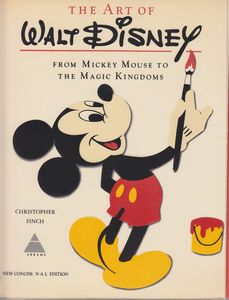 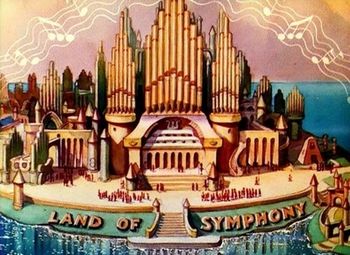 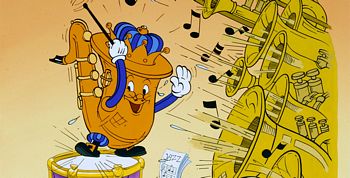 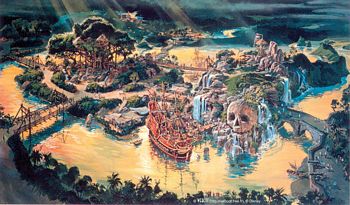 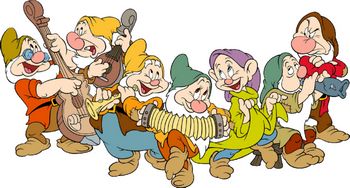 |
Copyright 2008 - 2025 G. Rudolf
